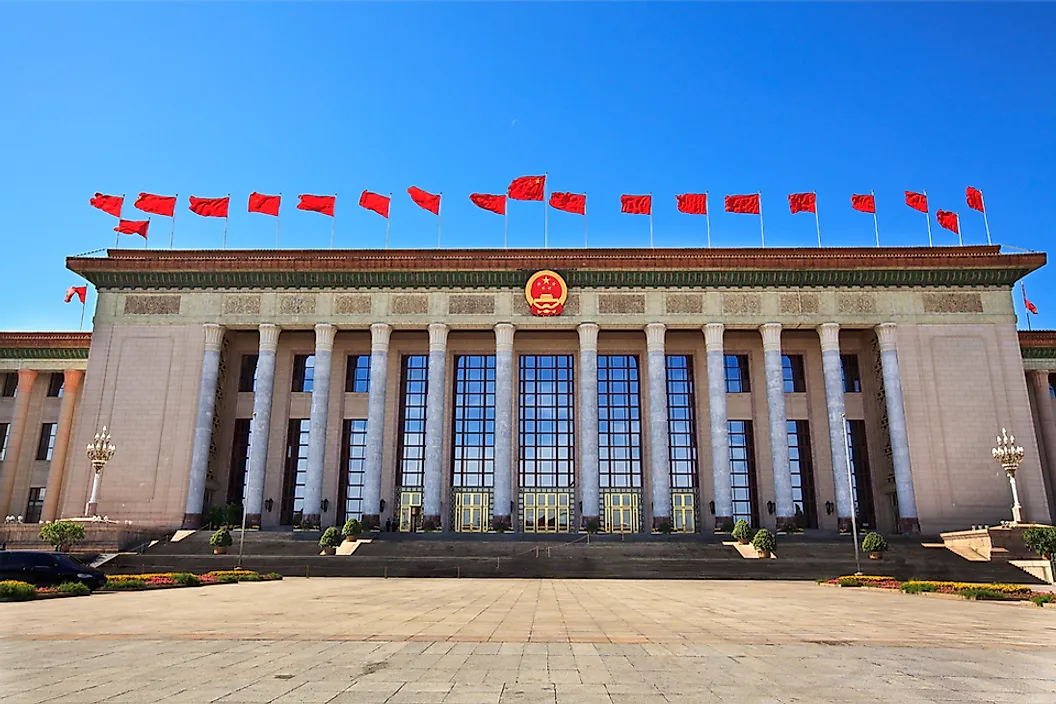When Did China Become a Country?

The People’s Republic of China, as we know it today, has existed since 1949, following the end of the Chinese Civil War. The unitary sovereign state is also the world’s most populous nation. The Communist Party of China has control over a total of 22 provinces, five autonomous regions, four municipalities, and two special administrative regions. As one of the earliest civilizations, China has a rich history, and dynasties ruled the region until 1912 when they formed the Republic of China (ROC).
Period of Dynastic Rule
Fossil evidence suggests people lived in China as early as 2.24 million years ago. However, based on Chinese history and traditions, the first dynasty, the Xia, began in 2100 BCE, although there is no confirmation of this date. The earliest confirmed dynasty was the Shang dynasty in Eastern China, which ruled the territory from the seventeenth century until the eleventh century BCE. The Zhou dynasty then conquered the Shang, and ruled from the eleventh to fifth century BCE. Over time, Zhou became weak and many independent states emerged from the dynasty. In the process of their formation and existence, these independent states waged wars against each other, which ended in 221 BCE after the state of Qin conquered most of them and formed a united China.
Imperial China
The head of the Qin dynasty, King Zheng, became the first emperor of the land and standardized a variety of systems across China, including the road widths, Chinese characters, measurements, and currency, among others. The dynasty fell after only fifteen years, following the emperor's death, his dictatorial policies, and dissent from the people. After the fall of the dynasty, there was widespread civil war before the rise of Han dynasty, which ruled China between 206 BCE and 220 CE. Han expanded the empire and created a Chinese cultural and economic identity. After the end of the Han dynasty, there were several rulers in quick succession during the period including Three Kingdoms, namely the Wei, Shu, and Wu. The Jin dynasty overthrew the Wei dynasty, which was followed by a civil war and invasions from the Five Barbarians. These events led to the formation of the northern and southern dynasties, although Han returned to power and restored China in 581. After Han, the Tang and Song dynasties followed, respectively. The Song dynasty became the first government in the world to issue paper money and to have a permanent navy. During that time, China grew both technologically and economically. The Mongols conquered parts of China in the thirteenth century and established the Yuan dynasty, which was eventually overthrown by the Ming dynasty. The Ming dynasty established Beijing as China's capital. The Qing dynasty was the final dynasty in China, lasting until 1912.
The Republic of China (ROC)
The Republic of China was established on January 1, 1912, under provisional president Sun Yat-sen. The presidency was later held by Yuan Shikai, who declared himself an Emperor in 1915, but people forced him to re-establish the republic. China then went through a period of uncertainty and powerlessness after Yuan’s death. Although then country's leaders wanted to make China a democracy, the Communist People's Liberation Army (PLA) opposed such ideology. This difference led to events like the Chinese Civil War and the Long March. During the Second Sino-Japanese War (1937–1945), the PLA joined an alliance with the ROC against Japan, an alliance that ended after the war.
The People’s Republic of China
Mao Zedong founded modern China after the Chinese Civil War ended in 1949. Mao made the proclamation on September 21, 1949. His Communist Party controlled mainland China, while the Republic of China controlled Taiwan, Hainan, and various other islands. In 1950, Mao captured Hainan. The Chinese Communist Party became a darling of the poor through policies such as land reform, industrial development, cultural identity, and health reform. In 1971, the United Nations recognized the People’s Republic of China and the country became a permanent member of the security council. Although China has had its fair share of internal challenges and international criticism, the country has continuously grown and expanded its economic policies to different parts of the world, especially the Global South.











